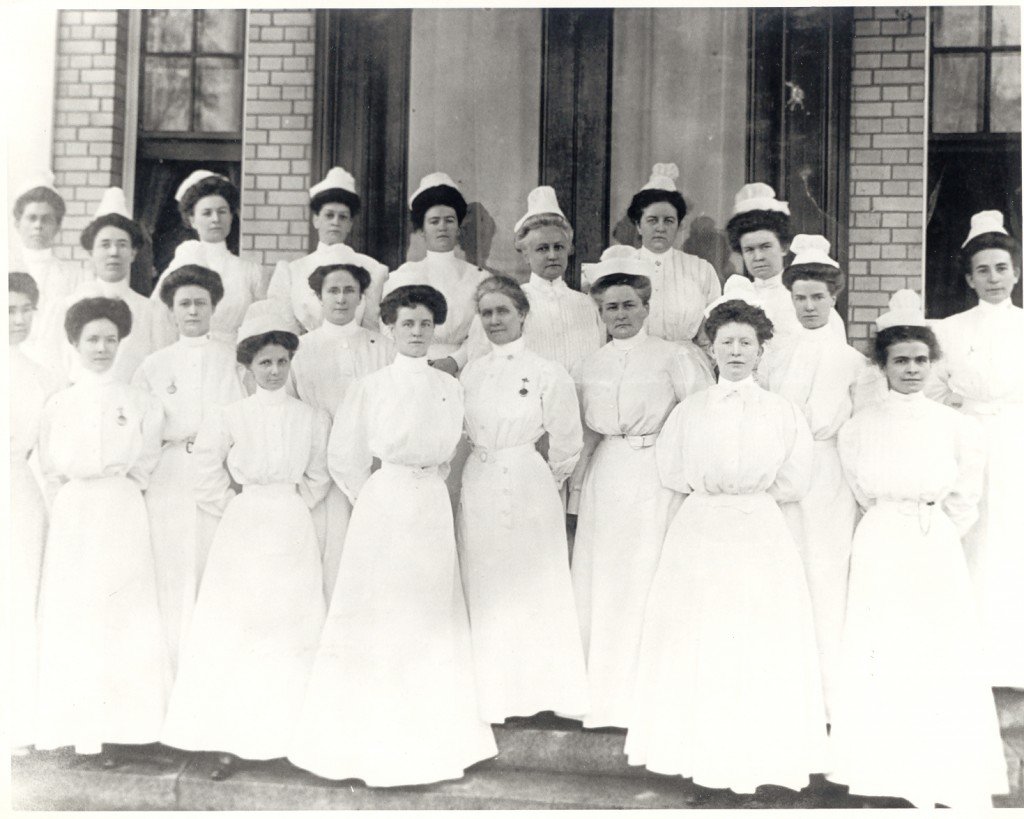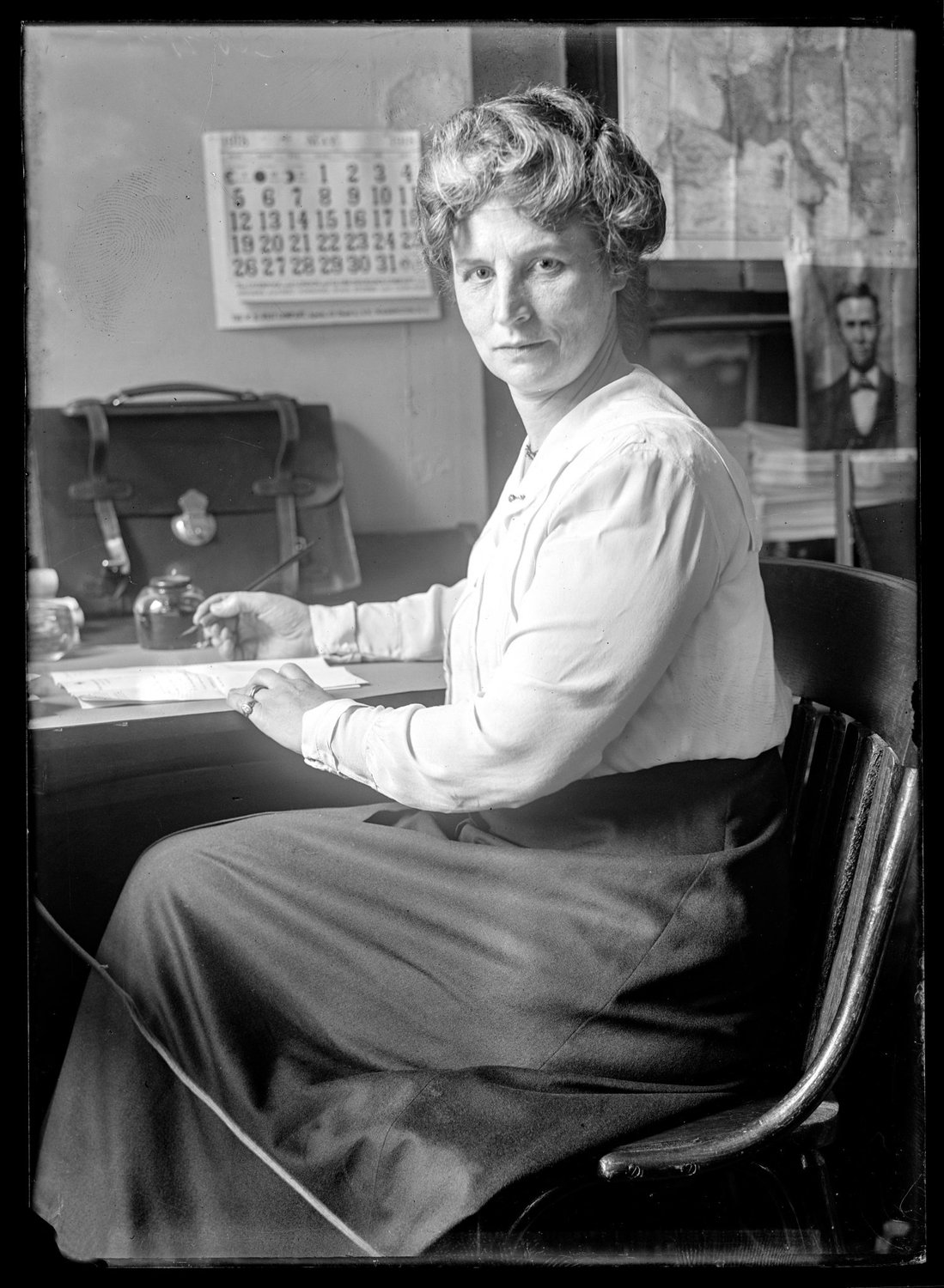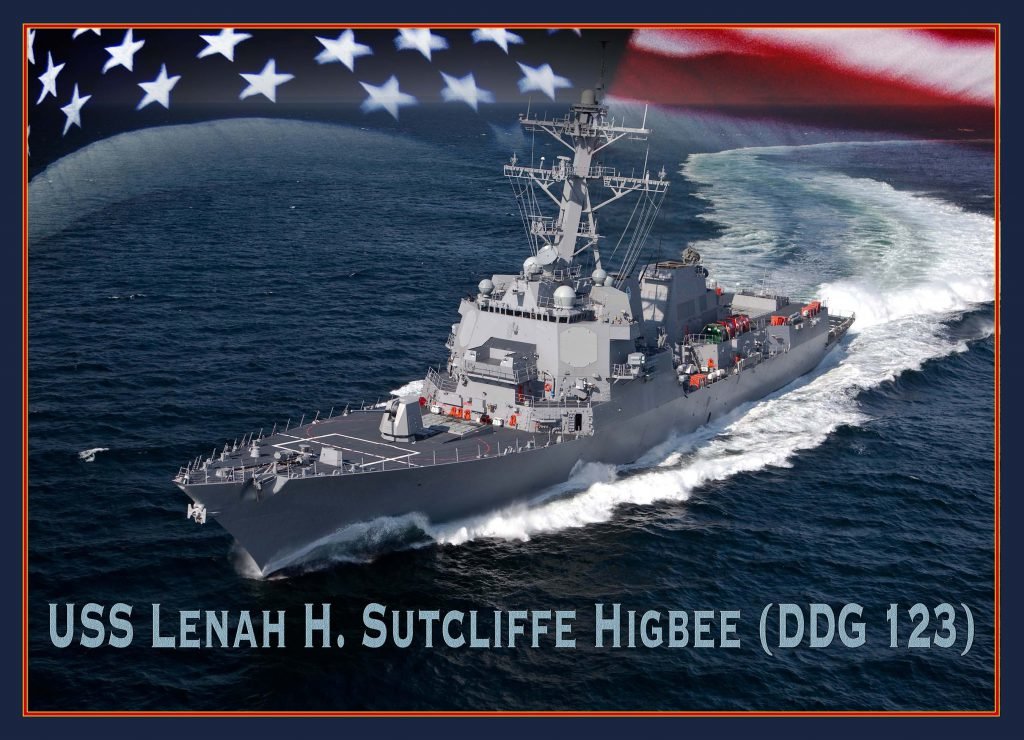Lenah H. Sutcliffe Higbee: The US Navy’s First Living Female Navy Cross Recipient

“The Sacred Twenty” Front row (left to right): Mary Dubose, Adah M. Pendleton, Elizabeth M. Hewitt, Della V. Knight, J. Beatrice Bowman, Lenah S. Higbee, Esther V. Hasson, Martha E. Pringle, Elizabeth Wells, Sara B. Myer, and Clare L. DeCeu. Back row: Elisabeth Leonhardt, Estelle Hine, Ethel R. Parsons, Florence Milburn, Boniface Small, Victoria White, Isabelle Roy, Margaret Murray and Sara Cox. Photo courtesy of BUMED Library and Archives.
The average US citizen may hear the names of US Navy aircraft carriers, battleships, and destroyers, and not realize the significance behind those namesakes. For the US Navy sailors who work and live aboard these ships, the names serve as their identity in homage to the war heroes, pioneers, and traditions of the past.
The names of Navy destroyers are of deceased members of the Navy, Marine Corps, or Coast Guard. On Nov. 13, 1944, the Navy named a warship after a woman for the first time in the Navy’s existence. The USS Higbee commissioned and was converted into a radar picket destroyer. The “Leaping Lenah,” as she was referred to by her crew, “screened carriers as their planes launched heavy air attacks against the Japanese mainland” and helped support occupying forces in the clearing of minefields during World War II. She also earned seven battle stars in the Korean War and was the first warship to be bombed in the Vietnam War.
When the Leaping Lenah was decommissioned in 1979, she held the record for the highest score for naval gunfire support of any warship in the US Navy. It was a remarkable achievement and the ultimate tribute to Lenah H. Sutcliffe Higbee — the first living female recipient of the Navy Cross.
Higbee was born in Canada in 1874 and trained as a nurse at the New York Postgraduate Hospital in 1899. She developed her knowledge of medicine at Fordham Hospital and held her own private practice as a surgical nurse until she entered the newly established US Navy Nursing Corps (NNC) in 1908. Higbee was an original member of the “Sacred Twenty” — the first group of female nurses to serve in the NNC.

“Nurses were assigned to duty at the Naval Hospital, Washington, D.C.,” said Beatrice Bowman, one of the Sacred Twenty nurses who later became the third superintendent of the NNC in 1922. “There were no quarters for them but they were given an allowance for quarters and subsistence. They rented a house and ran their own mess. These pioneers were no more welcome to most of the personnel of the Navy than women are when invading what a man calls his domain.”
The Sacred Twenty spearheaded the efforts to prove women had a role in the medical field as much as their male counterparts. They held no rank and were not immediately viewed as assets; however, their reputation would soon change. In 1911, after the first NNC superintendent resigned — as the nurses were often exposed to institutionalized discrimination — Chief Nurse Higbee assumed command as superintendent. She was responsible for overseeing 86 nurses across the US, Guam, and the Philippines. She lobbied for equal pay and for healthcare for military dependents.
Higbee served on several executive healthcare committees, including the National Committee of the Red Cross Nursing Service, and between 1915 and 1917 helped increase nursing recruiting numbers for World War I.
“For two years prior to our actual entering into this conflict, warnings had been sounded and such tentative preparations as were possible had been made by those who were wise to the significance of war signs,” Higbee said.
During her tenure of 14 years of service, Higbee helped expand the NNC from 160 nurses to 1,386 nurses. She was later instrumental in assigning nurses aboard Navy transport ships, and during World War I these nurses served transport duty. Another one of her initiatives was to build a force of hospital corpsmen that assisted in “nursing training methods” as well as to “develop in the hearts and minds of these ‘pupil nurses’ the principles of conscience care of the sick.”

After being exposed to the horrors from World War I, the complexities of battlefield wounds, and shell shock, Superintendent Higbee managed the development of Vassar Training Camp, the finishing school where nurses gained operational experience before arriving at their first assignments.
The following year, in 1918, the Spanish flu pandemic rocked the world — and as Higbee and her nursing corps did best, they adapted to the evolving demands of medicine. Their focus shifted from the war wounds to an invisible disease. A total of 431 US Navy personnel had lost their lives during World War I, and 819 more were wounded. The humanitarian crisis between 1918 and 1919, in contrast, saw 5,027 sailors die as a result of the pandemic.
“‘The most needed woman’ is the war nurse,'” wrote The Sun newspaper on June 9, 1918. “In reality the war nurse is a soldier, fighting pain, disease and death with weapons of science and skill. […] She goes prepared to share the risks and fortune of war, ready to make any sacrifice.”
Higbee and her team worked early mornings and late nights to diagnose patients and aid in their recovery. In 1920, Higbee became the first living recipient of the Navy Cross for “distinguished service in the line of her profession and unusual and conspicuous devotion to duty as superintendent of the Navy Nurse Corps.”
Three other nurses, Marie Louise Hidell, Lillian M. Murphy, and Edna E. Place, were awarded the Navy Cross medal posthumously.
Higbee passed away in 1941, and a year later the Navy granted nurses “relative rank.” In 1944, the Navy finally approved nurses for “full military rank” with equal pay.
Although the USS Higbee was decommissioned in 1979, in 2016 then-Secretary of the Navy, Ray Mabus, announced plans to commission the USS Lenah H. Sutcliffe Higbee, scheduled for 2024 — an honor the trailblazing nurse certainly deserves.

Matt Fratus is a history staff writer for Coffee or Die. He prides himself on uncovering the most fascinating tales of history by sharing them through any means of engaging storytelling. He writes for his micro-blog @LateNightHistory on Instagram, where he shares the story behind the image. He is also the host of the Late Night History podcast. When not writing about history, Matt enjoys volunteering for One More Wave and rooting for Boston sports teams.
BRCC and Bad Moon Print Press team up for an exclusive, limited-edition T-shirt design!
BRCC partners with Team Room Design for an exclusive T-shirt release!
Thirty Seconds Out has partnered with BRCC for an exclusive shirt design invoking the God of Winter.
Lucas O'Hara of Grizzly Forge has teamed up with BRCC for a badass, exclusive Shirt Club T-shirt design featuring his most popular knife and tiomahawk.
Coffee or Die sits down with one of the graphic designers behind Black Rifle Coffee's signature look and vibe.
Biden will award the Medal of Honor to a Vietnam War Army helicopter pilot who risked his life to save a reconnaissance team from almost certain death.
Ever wonder how much Jack Mandaville would f*ck sh*t up if he went back in time? The American Revolution didn't even see him coming.
A nearly 200-year-old West Point time capsule that at first appeared to yield little more than dust contains hidden treasure, the US Military Academy said.












